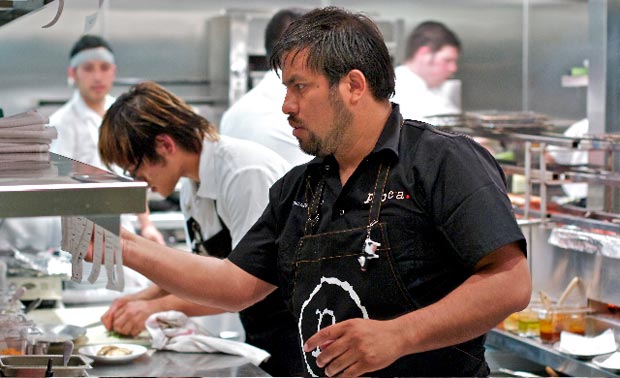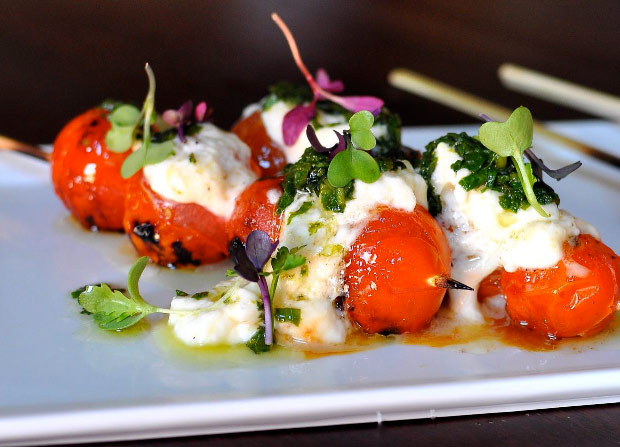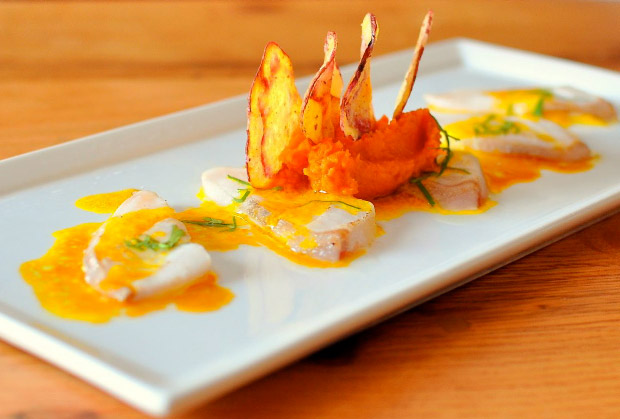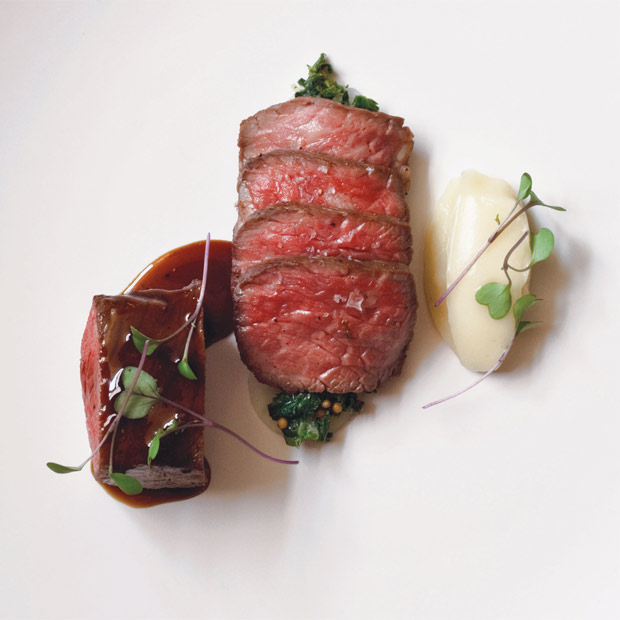Chef Ricardo Zarate
We interview an award-winning chef on bringing his distinctive Peruvian cuisine to L.A.


In the summer of 2009 chef Ricardo Zarate found a daring way to share his bold Peruvian flavors with Los Angeles. After many years cooking in elegant restaurants in London and Southern California, he surprisingly opened Mo-Chica in Mercado La Paloma, a food court near USC. With a menu that honored his traditional Peruvian roots and showed off his immense creative talent, he amazed local food scene devotees and eventually won many culinary accolades including Food and Wine Magazine’s “Best New Chefs of 2011” award. Zarate was also at the helm of the most coveted kitchen space in L.A. for four months in 2010, when he coordinated the myriad chefs cooking special menus at the revered experimental Test Kitchen.
Now with his beautiful new Beverly Hills restaurant Picca and a new Mo-Chica location opening in downtown L.A. later this year, Zarate has not only taken the city by storm with his masterful cooking and dynamic flavors, but has also helped put Peruvian ingredients and flavors in the mainstream spotlight.
We recently caught up with Zarate at Picca and talked about his mission to bring Peruvian food to the world stage and his devotion to Aji Amrillo. Our interview and his recipe for ceviche follow.

Why did you decide to open Mo-Chica in the L.A. after cooking around the world?
I came to L.A. because I had already been here and really liked it, and there is so much Latin culture here. Los Angeles is a difficult city to open a new restaurant, it is very competitive but one of the main things that drives me is challenge. Since the year 2000 I knew I wanted to open up a Peruvian restaurant—I had a vision that it was going to happen. I hope that in 20 years Peruvian food will be recognized as Japanese food is now. That’s my goal. People used to think of Japanese food as exotic and rare, and now it is part of world cuisine.


When you opened Mo-Chica in the Mercado La Paloma food court, were you surprised by the reaction?
I was very surprised and happy. The reason I opened Mo-Chica there is because I am very stubborn. I opened the restaurant during the worst time in the economy. In 2009 it was hard to get anyone to invest even one dollar. For me, my vision was ‘this is my only opportunity.’ I had to jump into the storm and try to survive. Peruvian food has always been there and now people are starting to pay attention. It was the right moment to do it.
Why do you think that Peruvian food works so well here in California?
In California, people like Mexican and Latin food. In terms of flavors, people here also like the umami flavors in Japanese, Italian and Mediterranean food. Peruvian dishes have all of these flavors on one plate. That is why I think it is going to be popular. You go to a Japanese restaurant and have very clean, nice ingredients. You eat Mexican and the food is very spicy. Mediterranean has the freshness. With Peruvian you can play with all of that on one plate, since the cuisine has Chinese, Japanese, African, European and Peruvian influences.

Can you tell us a bit about pre-Incan cuisine and how those flavors and ingredients factor into the dishes you make?
In my family we have descendents from the Incan on my mother’s side. Many of the ingredients we are using are in there, like sun-dried potatoes and the many types of corn like cancha, mote and choclo. We also have the Aji amarillo and Aji Panca chiles and herbs like Huacatay. A few weeks ago I went to the Santa Monica Farmer’s Market and we found Huacatay. I was so excited!

You use Aji amarillo chiles in many of your dishes. Can you tell us about them?
Aji amarillo is my favorite ingredient. If somehow that ever disappeared, Peruvian food for me would disappear. That’s how much I love it. I use it in many different ways. You can take out the seeds and make it mild or keep them for a spicier effect. It marries so nicely and is so flavorful, we put it in the cheesecake here and also started mixing it with miso…Right now we are importing then from Peru. My goal is to grow them here. We are working on it with a local farm. It’s tough. We have been trying since last year. Some of the plants died. In others attempts, the flavor was not right. Finally I received a phone call three weeks ago that the plants are doing well. Hopefully we will have the locally grown ones soon.
Another ingredient I would like to bring here is the Peruvian lemon. The flavor of the lemon is different than those grown in California. The Peruvian ones look like limes, but the skin is very thin. The flavor has acidity, but it is not as strong as the lemons here. When I use local lemons, I have to play a lot to balance the flavor.

You are known for cooking beef heart, can you elaborate on that?
Yes, in my country anticuchos is traditionally a street food of grilled food on a skewer. Beef heart is the number one most popular ingredient for anticuchos that you will find in Peru. We also cook stomach, tripe and many other ingredients.

You are also known for your classic and creative ceviches. What is the secret to a great ceviche?
First of all, it is fresh ingredients. The second thing to consider is the balance of flavor. For me it needs to be balanced with a kick. All the ingredients need to marry together. The kick can be chile, spices or garlic. Ceviche is a dish that needs to have power.
Do you have a favorite ceviche?
The most simple one is my favorite—sea bass, lime, onions, garlic, cilantro and for chile I would use Aji amarillo or Rocoto.
Ricardo Zarate’s Ceviche
For the ceviche sauce:
1/3 cup pure honey
4 garlic cloves
1/4 red onion
4 sticks of clean celery
1/8 lb fresh seabass
1 cup lime juice
½ cup coconut milk
1 tbs Aji amarillo paste
For the ceviche:
1 lb fresh seabass, diced
½ red onion, sliced
1 tbs cilantro, sliced
Red serrano chili (to taste)
Salt and pepper (to taste)
Notes: Aji amarillo paste is a yellow Peruvian chili paste that you can find in different Latin markets. You can substitute the serrano chili for either jalapeño or habanero chilis to taste.












